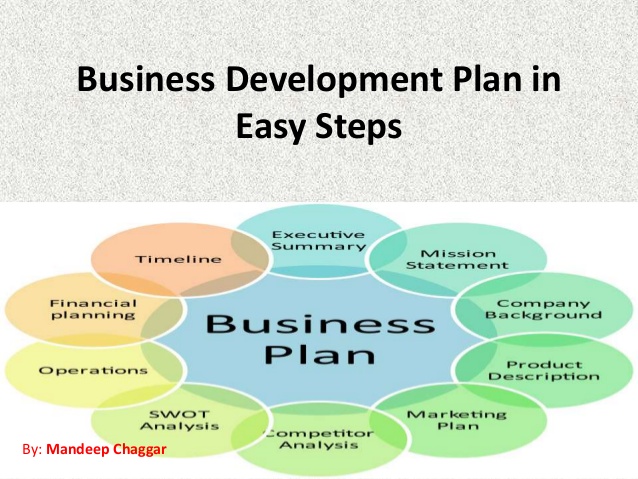Content
- How to calculate FTE. Step-by-step guide
- FTEs for federal programs and benefits
- What is FTE (full-time equivalent)
- What penalties apply to companies that fail to meet the mandate?
- What is a PEO? – A Complete Guide to Professional Employer Organizations
- An easier, fairer comparison between full-time and part-time employees

Essentially, the FTE is the number of determined full-time positions in an organisation. It is used to count employees depending on their degree of employment. Based on the clocked hours of previous similar projects, you can calculate budgets for the upcoming ones accurately. This blog entails an in-depth description of two different measures- FTE (Full-time equivalent) and Hours, that benefit specific industries and give you precise, useful insights into their KPIs. You should also leave out any employees who work outside the U.S., leased employees, and workers who hold positions like direct selling or commission-based agenting.
Employers can use FTE to evaluate their hiring capacity and current payroll, as well as for reporting purposes related to labor laws and employee benefit programs. CTO at Orbiter, Adviser at LOT.TRADE & Founder Wobbly.me and co-founder of Lazy Ants. https://www.bookstime.com/ I am advising on the production and growth of blockchain-based projects. I do web and smart-contract development, IDO, DAO and DeFi, CEX and DEX listings. Divide the total number of hours by 2080, and that ultimately determines the number of FTEs.
How to calculate FTE. Step-by-step guide
Using FTE as a basis for analyzing income, overheads and profits make understanding the costs and output per employee easier. For example, 1.0 is typically the FTE representation of an individual’s full work/school day, while 0.5 would indicate half of the original figure, generally in reference to the workday. In reference to an individual, 0.5 usually refers to the fact that the worker renders less than a full day of work or fte meaning the student attends less than a full day of classes. With Clockify, you can easily track your cost rates per employee and then compare and contrast them with employee billable hourly rates. Bear in mind that this is just the expected number of hours Olivia may work with a 0.7 FTE — she will likely use some of these hours for PTO. An employee with a regular budgeted assignment of 75% of a full-time job position has a 0.75 FTE.
For instance, if a technician is required to provide technical support to a client, they can log the number of hours spent on it. This takes care of the bill and also lets you gauge the efficiency of each technician. However, you also need to consider any breaks that the employee took during their workday. For instance, if the employee took a 30-minute break for lunch, you would subtract that time from the total time worked. In this case, the employee would have worked for 7.5 hours (8 hours – 30 minutes).
FTEs for federal programs and benefits
This way, you will be able to determine the number of full-time equivalent workers in your company even when you have part-time workers on-site. A full-time equivalent (FTE) is a unit of measurement used to figure out the number of full-time hours worked by all employees in a business. If your business considers 40 hours to be a full-time workweek, then an employee working 40 hours per week would have an FTE of 1.0. In contrast, a part-time employee working only 20 hours per week would have an FTE of 0.5—which shows that their hours worked are equivalent to half of a full-time employee. FTE stands for full-time equivalent and is used by businesses to calculate the total number of full-time hours worked within their business among all employees. A full-time employee (working 40 hours per week) is equal to one FTE; a part-time employee (working 20 hours per week) is equal to 0.5 FTE.
- Using the same formula, the number of part-time hours worked amounts to 5,000 hours per year.
- With the variety of working options available today some employees may work part-time while others may only work at certain times of the year or in several other flexible ways.
- FTE has many uses; as stated above, business analysts use it to calculate the labor cost and the number of employees required to complete a project.
- FTE is more commonly used to calculate how many staff are needed to deliver a project.
The 2,080 figure can be called into question, since it does not include any deductions for holidays, vacation time, sick time, and so forth. Alternative measures of FTE that incorporate these additional assumptions can place the number of hours for one FTE as low as 1,680 hours per year. The exact number will depend on the country where the employment is occurring, since the number of holidays varies by country. It indicates what a company could spend on a part-time employee if they worked full time.
What is FTE (full-time equivalent)
An explanation of how FTE is calculated and the various ways in which a business can use this metric when forecasting and budgeting. FTE has several different uses and several different calculation methods, depending on why you want to calculate it. It will help you plan your project work, set deadlines, and work out your budget. If you are such an employer, then you are eligible to apply for a tax credit in the amount of 50% of employer-paid health care premiums. An FTE calculation for all employees in a company needs to be rounded down to the nearest whole number (usually, 1.0 FTE or greater).
What Is Full-Time Equivalent (FTE)? – Forbes
What Is Full-Time Equivalent (FTE)?.
Posted: Fri, 28 Oct 2022 07:00:00 GMT [source]
If the trucks open at the same time, then you require two different people to run them. For example, say you run an ice cream van five hours per day, four days a week (20 hours per week). Several federal programs in the United States—such as the Paycheck Protection Program (PPP)—use FTE to determine employer eligibility. FTE is also used in the United States to determine whether an employer is an ALE (Applicable Large Employer) for the fiscal year. Finally, small business owners in the United States need this metric to see if they can apply for a tax credit in the amount of 50% of the employer-paid health care premiums.
What penalties apply to companies that fail to meet the mandate?
The paycheck protection program or PPP is a scheme rolled out by the government to encourage companies to keep workers on their payroll. To claim PPP, you may need to keep a PPP chart for the scheme’s duration to show your employee retention. The headcount is your overall number of employees, which must be a whole, not a rounded number, as in FTE or hours worked.
What does FTE stand for?
A full-time equivalent, sometimes abbreviated as FTE, is a unit to measure employed persons or students in a way that makes them comparable although they may work or study a different number of hours per week.
Various combinations can be created depending on the needs of the business. As you can see from the example above, you can easily calculate how many full-time equivalent employees you need to hire to successfully complete a project. All you need to do is enter how many hours of work are required to complete the whole project (estimated time), and then how many hours a day your employees will work on that specific project.
What is a PEO? – A Complete Guide to Professional Employer Organizations
Employers decide it based on practice and each employer’s operations, payscale, the scope of projects, and other factors. Headcount refers to the number of employees working in an organization, where each person counts as “one,” no matter how many total hours they work. It provides a figure that allows organizations to assess how many equivalents full-time employees are employed. First, it is necessary to determine the number of hours worked by part-time employees. Based on an FTE of 1.0, we calculate employees work 2,080 hours per year. Furthermore, this value is used only as a basis for calculating the annual FTE and reflects the hours of an employee who works 5 days a week, 8 hours a day.

For example, if your project needs 400 hours of work, you can equate it to 10 FTE (400 hours/40 hours) for 5 days. Accordingly, you can hire 10 full-time workers to fulfill the project demand. (For a year, that is 2,080 hours with 40-hour workweeks and 1,560 hours with 30-hour workweeks, which is considered full-time for ACA reporting). It’s unlikely that you only employ full-time employees in your company — you likely receive help from part-time employees or temporary workers. The full-time equivalency measurement lets you calculate the hours those employees work compared to a full-time workload. The results will reflect the actual full-time payroll of the company.
An easier, fairer comparison between full-time and part-time employees
Through this, you can identify the needs and internal capabilities of your employees more easily, as well as exercise more strategic management. Being a basic criterion in staff controlling, it is one of the most important staff indicators for companies. Particularly due to the development in the part-time sector, your staff planning will be more comprehensible and controllable with this ratio. In short, it is a crucial term that is important for HR specialists and accountants alike.
Popularity: 1% [?]





